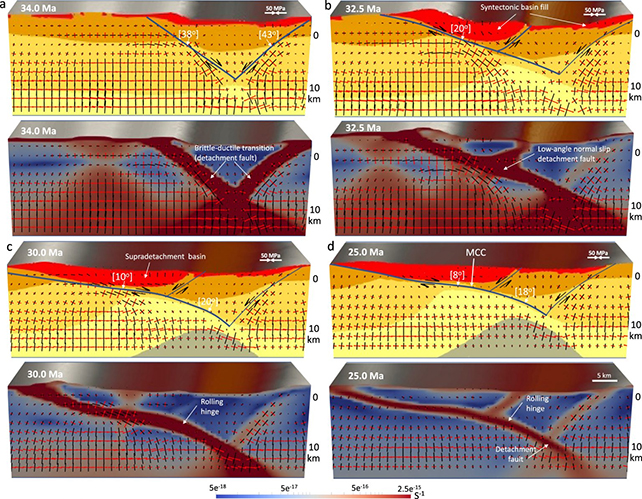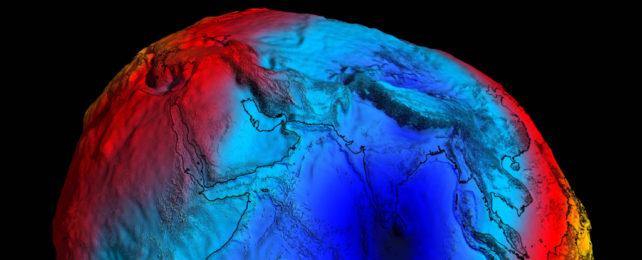Like all planets, Earth is the product of gravity. Bit by bit, the growing mass of dust and rock drew in sufficient material to become a swollen sphere of mineral we now call home.
Still today gravity continues to mould our planet from within, in far more delicate ways than we might imagine. A new study highlights the subtle gravitational effects deep-lying structures can have on the rise and fall of the crust above.
The researchers behind the study compare it to the mass of ice attached to an iceberg under the water, which isn't immediately visible but which still has an important role to play in the structure and the shifts that transpire higher up.
These deep gravitational pulls and pushes are able to create some dramatic movements along faults in Earth's crust, collapsing mountain belts and exposing rocks that had previously been as far as 24 kilometers or 15 miles below the surface, producing structures known as metamorphic core complexes.
While numerous studies have previously tried to explain the precise mechanisms behind the formation of metamorphic core complexes, the conditions of their evolution remain something of a mystery. Weighing into the decades-long debate about the origins and mechanics of these complexes, the researchers identified key geological processes behind their formation.
The team studied metamorphic core complexes around Phoenix and Las Vegas in the US, confirming they appear to be remnants of previously collapsed mountain belts.
Using computer modeling to chart how the landscape had most likely shifted over time, the researchers found the main driver of metamorphic core complex formation seems to be a thickening and then a weakening of their crustal roots.
Crustal roots form where lighter crust thickens beneath a mountain range, intruding into and replacing the heavier mantle. Weakened through processes including heat, fluid movement, and rock melt, the researchers explain, these thickened mountain footings can collapse, distorting contrasting layers of crust below.
This exposes the surface of metamorphic core complexes in a "domed upwarp" and traces of their turbulent formation can be seen in deformed rocks known as mylonites.
According to the researcher's models, this extensional collapse is driven entirely by gravity tugging on different densities of material in the overlaying crust and its boundary with the mantle.

The research builds on two previous and related studies from the same team of researchers: in a 2022 study, they modeled the same region of the US Southwest, showing how it might have looked before, during, and after the metamorphic core complexes, linking tectonic movement with climate shifts.
Before that, a 2021 study from the same group showed how deep Earth forces combine with climate to influence the landscape, and impact mammal diversification and species dispersal found within the fossil record.
The new research could change the way that we understand the history of Earth and predict how its geology might continue to evolve in the future as gravity plucks and prods at its crust.
What's more, the researchers think that their modeling approach might help geologists understand other mountainous areas around in the world, where crustal roots have thickened and partly collapsed.
According to the researchers, the study findings "likely explain many exposures of ancient gneissic domes around the world, where the brittle cover has likely been removed through erosion, exposing the core of the uplifted metamorphic dome".
The research has been published in Nature Communications.
